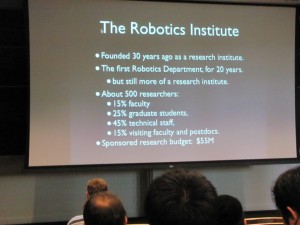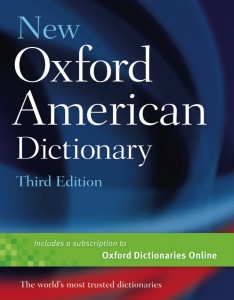Origins of the word Robot
The origin of the word robot dates back from 1920, when the Czech writer Karel Kapec published his science fiction play R.U.R. (Rossum’s Universal Robots) dealing with artificial men built for performing work in place of human beings. He invented the word Robota, from the base robot-, as in robota, compulsory labor, or robotník, peasant owing such labor. The robots described in the play are humanoid.
 The ISO (International Standards Organization) 8373 standard defines a robot as an automatically controlled, reprogrammable, multipurpose, manipulator programmable in three or more axes, which may be either fixed in place or mobile for use in industrial automation applications. The International Federation of Robotics, the European Robotics Research Network (EURON), and many national standards committees use this definition.
The ISO (International Standards Organization) 8373 standard defines a robot as an automatically controlled, reprogrammable, multipurpose, manipulator programmable in three or more axes, which may be either fixed in place or mobile for use in industrial automation applications. The International Federation of Robotics, the European Robotics Research Network (EURON), and many national standards committees use this definition.
 A broader definition is given by the Robotics Institute of America (RIA): a reprogrammable multi-functional manipulator designed to move materials, parts, tools, or specialized devices through variable programmed motions for the performance of a variety of tasks. The RIA subdivides robots into four classes 1. devices that manipulate objects with manual control, 2. automated devices that manipulate objects with predetermined cycles, 3. programmable and servo-controlled robots with continuous point-to-point trajectories, and 4. robots of the last type which also acquire information from the environment and move intelligently in response.
A broader definition is given by the Robotics Institute of America (RIA): a reprogrammable multi-functional manipulator designed to move materials, parts, tools, or specialized devices through variable programmed motions for the performance of a variety of tasks. The RIA subdivides robots into four classes 1. devices that manipulate objects with manual control, 2. automated devices that manipulate objects with predetermined cycles, 3. programmable and servo-controlled robots with continuous point-to-point trajectories, and 4. robots of the last type which also acquire information from the environment and move intelligently in response.
 The New Oxford American Dictionary defines a robot as a machine able of carrying out a complex series of actions automatically, esp. one programmable by a computer. Here the ability of manipulating objects is not required. According to Encyclopaedia Britannica, a robot is any automatically operated machine that replaces human effort, though it may not resemble human beings in appearance or perform functions in a human-like manner. Here the anthropomorphic appearance emerges, at least for being explicitly negated.
The New Oxford American Dictionary defines a robot as a machine able of carrying out a complex series of actions automatically, esp. one programmable by a computer. Here the ability of manipulating objects is not required. According to Encyclopaedia Britannica, a robot is any automatically operated machine that replaces human effort, though it may not resemble human beings in appearance or perform functions in a human-like manner. Here the anthropomorphic appearance emerges, at least for being explicitly negated.
The definition from Random House Webster’s dictionary is a machine that resembles a human and does mechanical, routine tasks on command (here the anthropomorphic shape is needed, autonomy not) or a machine that resembles a human and does mechanical, routine tasks on command.
 Another definition, from Encyclopaedia Britannica, is a machine that looks like a human being and performs various complex acts (as walking or talking) of a human being. In some definitions also virtual software agents performing the same tasks are defined as robots (in some cases the latter are simply called bots), but here we will strictly require that a robot is a material object. A mathematical model of a robot implemented on a computer is thus a mathematical model of a robot, but not a robot in itself.
Another definition, from Encyclopaedia Britannica, is a machine that looks like a human being and performs various complex acts (as walking or talking) of a human being. In some definitions also virtual software agents performing the same tasks are defined as robots (in some cases the latter are simply called bots), but here we will strictly require that a robot is a material object. A mathematical model of a robot implemented on a computer is thus a mathematical model of a robot, but not a robot in itself.

![rossums-universal-robots[1]](http://www.taiijas.com/wp-content/uploads/2012/04/rossums-universal-robots1-300x220.jpg)
![Capek_RUR[1]](http://www.taiijas.com/wp-content/uploads/2012/04/Capek_RUR1-300x234.jpg)
